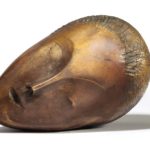
LONDON.- A vast painting of volcanic catastrophe by the British artist John Martin (1789–1854) is exhibited for the first time in almost a century. When the Thames flooded in 1928, The Destruction of Pompeii and Herculaneum 1821 was widely considered to have been destroyed. After a painstaking restoration, it was unveiled to the public on 21 September 2011 as part of Tate Britain’s major exhibition, John Martin: Apocalypse. The restored painting will now be exhibited for the first time in almost a century as part of John Martin: Apocalypse, the largest display of Martin’s work seen in public since 1822. At Tate Britain to 15 January 2012, the exhibition will reassess this singular figure in art history, and reveal the enduring influence of his apocalyptic art on painting, cinema and popular spectacle.







